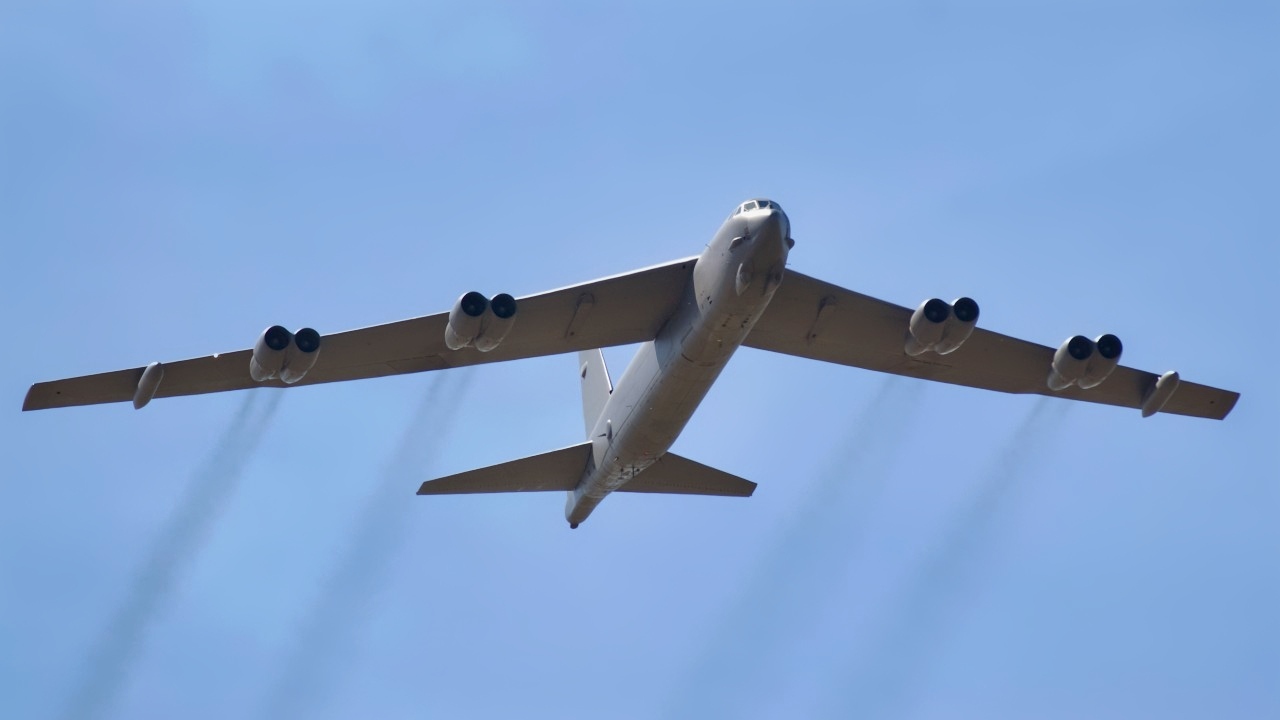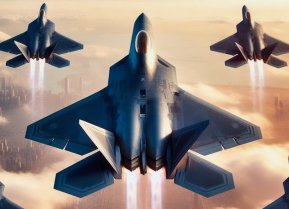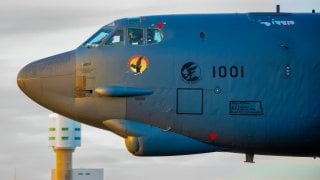Fire the Missiles! B-52H Bombers are Training for War Against Russia and China
The recent Bayou Warrior military exercise at Barksdale Air Force Base involved the deployment of live missiles by the U.S. Air Force's B-52H fleet.
Summary and Key Points: The recent Bayou Warrior military exercise at Barksdale Air Force Base involved the deployment of live missiles by the U.S. Air Force's B-52H fleet.

-This exercise reflects the increasing global military tensions reminiscent of pre-World War I maneuvers. The U.S. military, under financial and logistical strains, is training intensely to prepare for potential conflicts with near-peer adversaries like China and Russia.
-Despite these efforts, significant concerns remain about the readiness and current doctrines of the U.S. military, suggesting a need for new strategic thinking and leadership to navigate the evolving geopolitical landscape.
B-52H Fleet's Bayou Warrior Exercise: A New Era of Military Readiness
A recent military exercise at Barksdale Air Force Base in Louisiana saw the base’s B-52H fleet deploying “live missiles” in what the Air Force referred to as a “readiness exercise” dubbed Bayou Warrior.
The exercise was intended to be real-world training for a U.S. military that is increasingly under threat from multiple powers – some of them, such as China and Russia, that are considered to be nearly equal in capabilities to the United States.
Heading to a Dark Historical Antecedent
On the eve of the First World War, the conflict that basically broke the 20th century and obliterated the centuries-long European-led world order, the great powers of that era jockeyed for power.
As part of these maneuvers, the European great powers attempted to undermine each other at every turn in the run-up to war. One of the ways they did that was by endless military exercises. Over time, these exercises got more complex, and added to the sense that a great war was coming.
The Bayou Warrior exercises at Barksdale were similar to those exercises as the militaries of the world today are jockeying against one another in ways not seen in decades. During the exercise, the Air Force trained with live missiles.
Launching live missiles is a costly move, and exercises like this in the 1990s and even the early 2000s were few and far between.
The Details of the Exercises
America’s largest bomber wing, the 2nd Bomb Wing, is located at Barksdale. One official description of the exercise stated that the exercise was meant to “generate, load, and deliver conventional weapons in a simulated environment.” The entire point of the exercise, according to U.S. Air Force Col. Bryan J. Walter, the CO of the 2nd Operations Group said, “[The Air Force inspector general’s office] will come in, and they’re going to give you a hard look at, ‘Are you ready to go?’”
This exercise was meant to test the Air Force’s strategic readiness for potential long-range strike missions, which is why they used live munitions. The only reason the Air Force would be doing this is because the fear is real that a war with a near-peer competitor could happen.
At a time when the U.S. military is cash-strapped (despite having a combined budget of nearly $1 trillion), the Air Force is spending millions of dollars preparing its personnel for a real-world conflict. Of course, training is something all militaries do. And training in as close of an approximation to real-world conditions is the best way to ready one’s military to be dominant.
Yet the nature of this particular training exercise, the kind of equipment involved, its scope, and the way in which the results of this exercise will be deployed across the wider force are what really matter.
We are, as I have written repeatedly both in these pages and elsewhere, on the brink of WWIII. What’s more, the U.S. military is the least prepared for such a conflict. Multiple sources over the years have indicated that the military is the weakest it has been since the interwar years.
These sources are likely correct. There is a recruitment crisis. America’s military equipment is worn down after 20 years of endless Mideast warfare. Our doctrines are no longer prepared for the kind of great power conflict we face today. The funding of the military is mismanaged. And America’s defense industrial base is hopelessly depleted.
That’s to say nothing of the nature of America’s political leadership, which for many years has left much to be desired.
These increasingly assertive exercises are meant to signal U.S. military capabilities to American foes while giving the force much-needed real-world training. But these exercises are insufficient. Under current circumstances, the U.S. military will lose a war against China if that war erupts anywhere along what’s known as the First Island Chain.
The United States, via NATO and Ukraine, is checkmated by Russia in the Ukraine War. It’s obvious that Washington wants to avoid a wider Middle East war, as the situation between Israel and Iran reaches crisis levels.
Are We Even Drilling Properly?
The U.S. military cannot even effectively deter the Houthi rebels in Yemen, with their significant and growing anti-ship weapons capability. Meanwhile, Russian warships lurk off the coast of Florida, likely preparing to help Venezuela in its bid to conquer its oil rich neighbor of Guyana.
So, the U.S. military is doing what it knows how to do: It drills according to its best laid plans. But those plans were written in a bygone era. What’s needed is an entirely new understanding of the geopolitical situation coupled with the kind of visionary leadership that can avoid the likes of a third world war that will destroy whatever is left of American power.

Following plans that no longer reflect the geopolitical reality we now live in is a very dangerous thing to do indeed.
Author Experience and Expertise: Brandon J. Weichert
Brandon J. Weichert, a National Interest national security analyst, is a former Congressional staffer and geopolitical analyst who is a contributor at The Washington Times, the Asia Times, and The-Pipeline. He is the author of Winning Space: How America Remains a Superpower, Biohacked: China’s Race to Control Life, and The Shadow War: Iran’s Quest for Supremacy. His next book, A Disaster of Our Own Making: How the West Lost Ukraine, is due October 22 from Encounter Books. Weichert can be followed via Twitter @WeTheBrandon.
All images are Creative Commons or Shutterstock.
From the Vault
Russia Freaked Out: Why the U.S. Navy 'Unretired' the Iowa-Class Battleships
Battleship vs. Battlecruiser: Iowa-Class vs. Russia's Kirov-Class (Who Wins?)


